‘That’s how all the cities are changing now. … But there’s nothing you can do. Things change.’ – Mike, Llangefni.
Snowdonia is a wonderful place. Visit it if you can, explore by foot or pedal its gentle heights, mapping with your eyes how undulating fields become forests that give way to an explosion of jagged rocks strewn up and down peaks, clustering in valleys with the heather and bracken. There’s a few sheep ensuring that the grasses are kept short, but in certain moments it’s absent of life and just lovely.
Snowdonia can also be enjoyed in the rain. As a variety of the travel experience, it’ll turn out to be inferior to say the least to a delicious afternoon huffing up then whizzing down its mountain peaks in the baking heat, sustained by tap water, Brains’ ales and fresh blackberries, but hey, it’s still alright. The weather’s threatening murder as I set out to leave. I dress up in my waterproofs and say goodbye to my friends from the previous evening, and leave the hostel by Swallow Falls. I’m following the road west through Snowdonia and passing by Snowdon. It’s especially forested and verdant here, and I pass Artists’ Woods, a pretty little thing with the bizarre name of ‘Ugly Cottage’, and reach Capel Curig, a small village where the road forks. I take the road less travelled, up towards Snowdon itself.
Rivers splay everywhere across this enchanted landscape, taking a form like the spindly lines of human blood capillaries, flowing down into the valleys. The road is steep and busy with cars taking their passengers up to one of Snowdon’s six mountain trails. The pedals require some stamping and standing to continue their operation up these heights, but I’m just in love with the rugged rocks, heather hillsides and impressions of serenity and peace I drink up along the road to Snowdon itself. I start to pass hikers beginning the long and relatively gentle ascent up. The road forks again, one path heading down to Beddgelert and lined with parked cars; another ascending up towards the clouds. Here’s my route. I’m strangely excited by the prospect ahead. With difficult and laborious movements, I huff up to Pen-y-Pass, the peak wherein some climb a shorter route to Snowdon. The views of the surrounding valleys are just delightful, sufficient to forgive the plague of cars and buses blocking the roads either way.
And the spring down! I’m applying the brakes to stop myself flying straight over the handlebars. It’s a delight racing down, whizzing by confused sheep and clusters of shrubs, trees few and far between. Just the jagged rocks and their formations, the harsh yet harmonious serenity of the place. Wonderful cycling.
At the bottom is Llanberis, another village defined by its provision for tourism. Outside one can see the tiers cut into a purple mountain, the remains of slate quarrying that once provided an income for workers who travelled here. There’s a small railway here that charges huge prices to take up tourists to the top of Snowdon and back, and it’s fully booked before I can even consider being lazy enough not to walk it. Again, like at Betws-y-Coed, I encounter visitors from across the world here, attracted by the tranquillity promised by the park and the relative ease of ascending Snowdon. There are a couple of large lakes one can gaze out languorously, think of the distance of home, of one’s love, or the rumble in one’s tum that suggests its time for lunch…
For the last two days, heavy rain clouds have hung over the atmosphere with a solemn and threatening scowl more intimidating than a US embargo. Now they prove good to their word. There’s no time to hang around. I head out, eyes wincing the rain, pushing north-east towards Anglesey. It’s generally flat in the area, marked out by its fields now in place of Snowdonia’s forests. With Llanberis I leave Snowdonia behind for now, but there’ll be more to come, and the landscape becomes one more agricultural at the same time as it becomes more residential. Smatterings of cottages increase, and these fields become less distinct and more a blur. Something special’s disappearing, but ahead lies an island most couldn’t place.
I battle with the traffic on the road to Holyhead, most heading for the ferry to Ireland. The scene opens up at Britannia Bridge, crossing the Menai Strait into Anglesey. It was originally built for trains but an accidental fire set by two lads forced the bridge to be reconstructed for road traffic too back in 1970. Like much of that era, function’s the thing, and there are no concessions to beauty or pleasure in its design. On the other side I find a mediocre hotel and a toilet where the remainder of my stomach disappears. I can easily manage cycling sixty or seventy miles the next day after a few beers, but combine wine and all else in and my body struggles to pay the bill.
But turns out I’m somewhere special. Not simply Anglesey, a surprisingly large island off the north-west coast of Wales. It’s larger than the Isle of Man and the fifth-largest island off the British isles, and cloaked in its own distinct Welsh culture. Not quite that, though I’ll be exploring Anglesey throughout this afternoon and evening, come rain or… rain. It’s this peculiar little village I’ve landed in. Its name is Llanfairpwllgwyngyllgogerychwyrndrobwllllantysiliogogogoch. OK, Llanfair PG for short.
The name is an invention of enterprising Victorians, and means ‘St Mary’s church by the white hazel pool near the fierce whirlpool with the church of St Tysilio by the red cave’. Is at a joke at the expense of the Welsh language – most Welsh names are directly descriptive of the place – or a canny marketing ploy? There’s not much to Llanfair PG at all except a garish shopping-visitor centre, where buses from Swindon and elsewhere marked simply ‘Wales’ land, depositing their passengers to take a look at the tat, have a photograph taken by the small railway station’s lengthy sign, and have their passports stamped with the village’s name.
It’s a bit of a dive. One can spy a ludicrously vain column in the distance with the Marquess of Anglesey on the top, and a stone pillar-cum-clocktower of a style I’ll see repeated in north Wales. The rest of the village feels like an unwilling accomplice to a robbery where no-one’s quite sure what’s been taken. Outside one pub I see a man talking to himself and laughing as he sips his pint. There’s a grotty hotel and a small supermarket. ‘What’s this place called?’, one tourist asks to another, as if lost. No-one here can pronounce it (though I’ll later meet a man in Bangor who can). In the tourism centre I’m shown a map of the place. Its coastline is around 125 miles in length, far more than I’d gambled, me being the idiot-opportunist navigator. I scale back plans to cycle round to Newborough beach, Holyhead and the South Stack for another time. This island needs at least a couple of days. I have none…
Instead, I head back towards the centre of Anglesey, to the town of Llangefni in the centre of the island. Anglesey was once a relatively depopulated and rural place until Telford completed his road here by 1826. The Romans built a naval base here, and later a religious community was founded by St. Cybi in the 6th century. The remoteness of the place allowed for religious communities to develop and thrive, from druids to Celtic Christian monks. But Wales rapidly industrialised, and became the world’s first industrial nation by 1850, with more of its workforce found in the industries than in farming. Populations and activity swelled on Anglesey first with milling, then quarrying, from the mid-18th century onwards. Slate and bronze were discovered and mined for their value until recently, when reserved were spent. Parys mountain in the east was once the world’s biggest producer of copper, sorted and then exported at Amlwch on its east coast.
These days, much of this industry has either disappeared or is in the process of being dismantled. Anglesey’s industrial fate is a little like that of its one nuclear plant at Wyfla, the last Magnox plant of its kind still functioning in the world. It thrived and grew from a once-productive and much-hailed technology. Profits were not reinvested into communities or new research, and the plant has become increasingly obsolete. It now sits on the north coast of Anglesey, awaiting decommissioning.
Llangefni’s a small town built around the industries that surround it. There are few attempts at a lasting civic identity from its wealth, indicating I suppose that the companies which profited from mining, quarrying and milling had English owners uninterested in this strange and remote island. I talk to Mike, a middle-aged fella in the town’s small and deserted high street. He’s taking money out and about to head off to watch the football. He’s the first soul I see in a little while, and after a few days inside my own head, his conversation is like a reprieve from an unjust sentence.
Mike describes the place as a city without any reflection on what that might mean. It seems pretty inaccurate – even town is a little hopeful – but after days travelling through the sporadic and sparsely populated communities of north Wales, the sentence can be made with some justification. He tells me about the loss of the town’s industries and its changes in recent years. He tells me about the bronze mined here, and the production of bromide. Rio Tinto had a large plant at Holyhead which recently closed, and he lists several others, a narrative of decline. ‘Good jobs’, secure, went. I used to scoff at factory work as something unfortunate, to do for a while but maybe get out of. But the peoples I’ve met in north Wales have shifted that view. The security, stability and, to be fair, degree of skill required made work at certain places, like the Kelloggs factory in Wrexham for instance, something desirable. I’ve heard mining and industrial work discussed in London circles as a kind of affliction. A choice of zero hours or at best part-time work in a supermarket, or warehouse, or call-centre, or care home, seems far less desirable. The precarious labour discussed in the cities, of arts interns armed with postgraduate qualifications and a synthesis of Lacan and Badiou just doesn’t mean much out here.
Mike’s resigned to change as a concept. It’s an attitude of stoical resignation to a worsening state of affairs. He talks about deindustrialisation and unemployment as historically inevitable features though. Is that the case? He seems so, what else is there? Trade unions and socialist groups have not been heard in that silence wherein the alternative story, of skilled jobs creation and growth, is needed.
There’s some perks to the growth of the service sector, as some I meet see it. ‘Things change’, Mike repeats. ‘Five years ago there was one fish and chip shop here. Now there’s an Indian, Chinese. But there’s not much here for those people, and they’re not around long. They live in the bigger cities’.
The small, stable and socially homogeneous communities of Anglesey can lend to a seemingly benign slant of ‘us’/‘them’. I travel on, timing ticking away, postponing a trip to Amlych for another adventure. I’m heading east through Anglesey’s former quarrying crannies, passing through farmed countryside that’s largely flat and unarresting. The landmass ends at Benllech, a tourist resort by Red Wharf Bay. There’s a large caravan site by the top of a hill where the main part of the settlement is, which is where I stop for some chips at the Golden Fry. Energies are starting to flatten. Anglesey’s having some kind of negative effect on me, or maybe it’s the hangover, or something about the loneliness of travelling that on certain days can riddle and sink one’s strength like a virus.
It’s a tacky place, but hard not to smile at, Benllech. It’s a Sunday, and families, bikers and other miscellaneous wanderers are clustered around here, drinking coffees, shouting at their parents, picking at fish and chips and gazing at everyone else here, often at the same time. A horse-drawn carriage trundles past a Tesco Express. I take a road down towards the large sandy beach nestled within the bay. It’s the late afternoon and families are beginning to pack up their towels, tents and plastic buckets after a day at play. Everything’s multi-coloured and light, deferring gloomy sentiments to the back of the mind. I wander along the prom, tuning in and out of the conversations of tourists, mostly English. There’s an ice cream stand where a father is maintaining a sustained argument with one of his sons over the possession of a 99 flake. I get something sweet and gaze out of the Irish Sea, wondering what it is about being close to water that feels so tranquilising and yet melancholy at the same time. I look around at my companions, making minimalist sculptures of their ice creams with their tongues, and wonder who else is feeling the same.
A fella pushing his cycle out of one of Benllech’s cheery terraces cheers me on as I huff back up towards the peak overlooking the bay. From hereon it’s an easier ride through the fields down towards Beaumaris. On another day I’d’ve stopped at Penmon where there’s reputed to be one of the most beautiful of beaches, but the variable though invariably wet weather rubbishes this plan. I pause at the Panton Arms. A man and woman in their mid-30s walk together into the pub, their bodies close but not holding hands. It’s a break away. He’s drinking lager, and she a large glass of pink, which neither much enjoy, but enjoyment’s not the aim. They talk a little while, exchanging observations until one annoys the other. There’s laughter and the airing of frustrations. Opposite there’s a Chinese chip shop. Bored kids skip in the street and make robotic dances. Time slowing.
I head down to the older and more impressive seaside resort of Beaumaris, bouncing down a series of hills into a small resort with an old castle and a Victorian parade of shops. I head into the George and Dragon, the town’s oldest pub at a mere six or seven hundred years, though the ale is stale and the carpets dusty, the pub decorated in a random but characteristic assortment of random 19th century household items. Club music blares from inside the Bold Arms, opposite. I wander down to the small pier and peer at small boats jangling and jutting on the Menai Strait in the distance. This would be a pleasant enough place to return to, but Anglesey’s not left much impression on me.
There are some curious buildings along the road back to the Menai Bridge, Anglesey’s other crossing to the Welsh mainland – an utterly misplaced high-rise apartment block made of some kind of concrete, followed by the gloriously pretentious Chateau Rhianfu, a large mansion overlooking the Menai with a palisade of priapic chimneys. I cycle through the small but cheery town of Menai Bridge, then head over the suspension bridge back onto the mainland. A little further up a hill and I reach the outskirts of Bangor, a town that’s both small and unevenly developed, defined by its university buildings, large supermarkets, and utterly undersized town centre. I’m staying with Simon, who has kindly offered to host me through the Couchsurfing website. I find his place in the western part of the small town, off its old high street, and we quickly get talking.
Simon’s passion is linguistics. He runs the Omniglot website, a free online encyclopedia of writing systems and languages which he’s built himself, and continues to expand. He can speak around five languages fluently, around twelve competently, and another twelve or so to a more basic level. He tells me that he learns from phrases, and then expands, and as we talk he runs through a number of apps, books and other websites that he’s found indispensable for picking up new languages. He discusses various learning techniques, from spending all one’s time in the country where the language one desires is spoken, to repeating phrases until pronunciation is perfect, and building from there. There’s no one ‘right’ method, he argues, and a synthesis may work best, or for others, one may be fine.
‘It’s like music’, he says. Learning a language or an instrument requires understanding specific rules and new forms of expression, but commonalities between them all help establish connections quicker – a similar music script, or chords, melody, or whatever. Simon tells me about the folk group singing, ukulele gatherings and other musical activities of Bangor, particularly in his local, the Skerries. He gives me more hints about the Welsh language, and its predominance in the north of the country, as well as a few more useful phrases to carry with me.
Bangor is particularly quiet in late August, with most of its (student) population still away. We eat and drink tea, discussing linguistics, travel and music, before we both tire and head to bed. Before I sleep in Simon’s spare room, I peak into his linguistic books and recognise a great deficiency in myself, able only to speak English, just one of many languages spoken on these islands.




















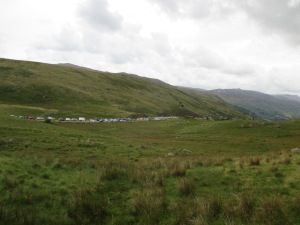











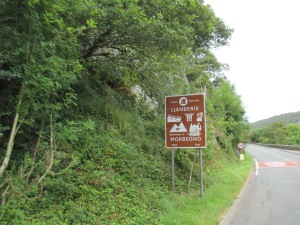


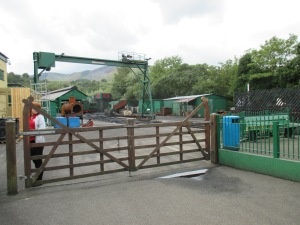










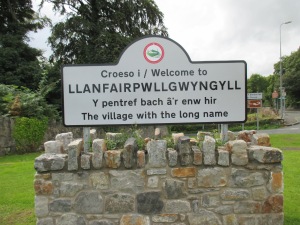














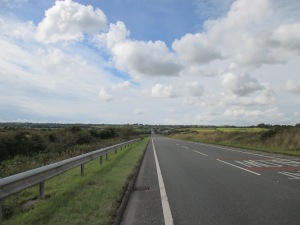








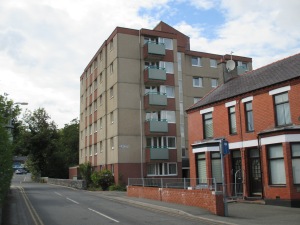

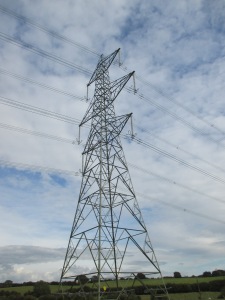





































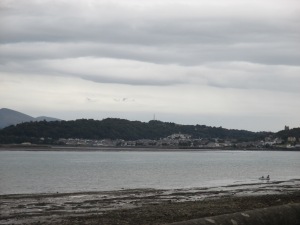














I am so glad that you found Snowdonia and enjoyed it! It sounds fun whizzing down the hills!
Do try and get across the bike/rail viaduct at Barmouth and cycle along the lower side of the estuary-it is stunning! You might want to pop in on the nudist colony at Shell Island!